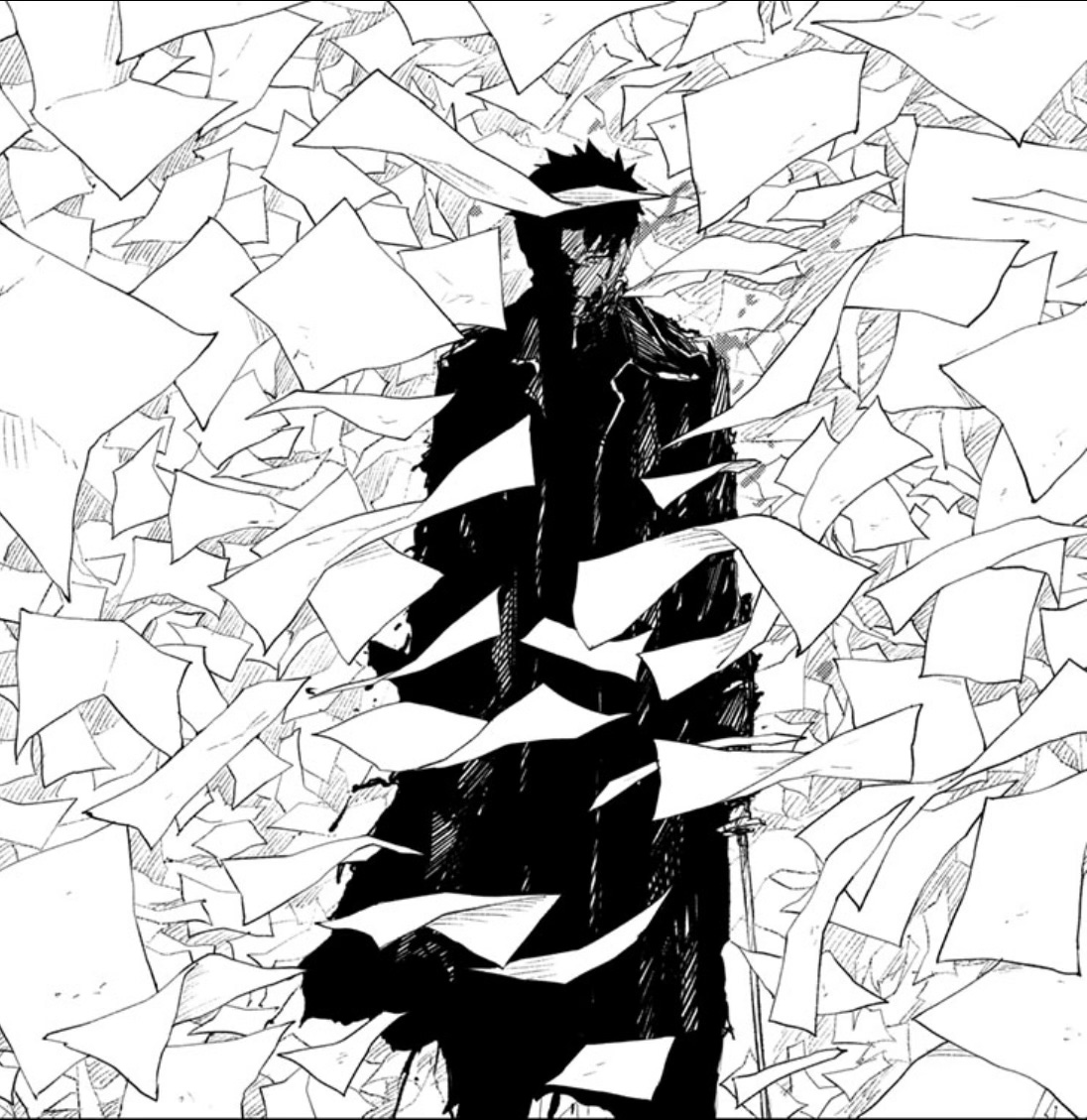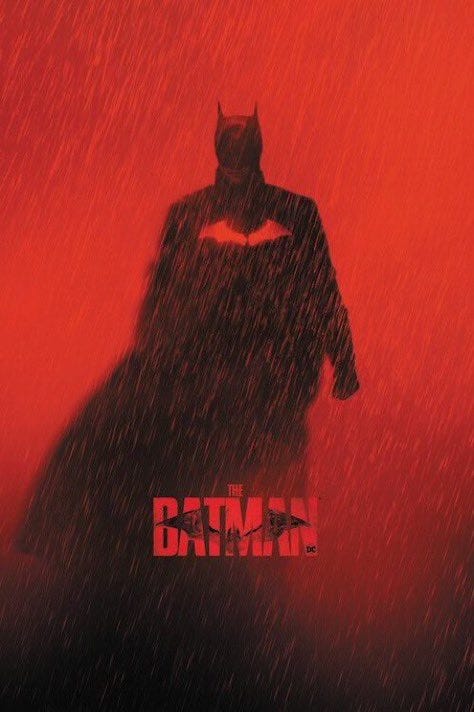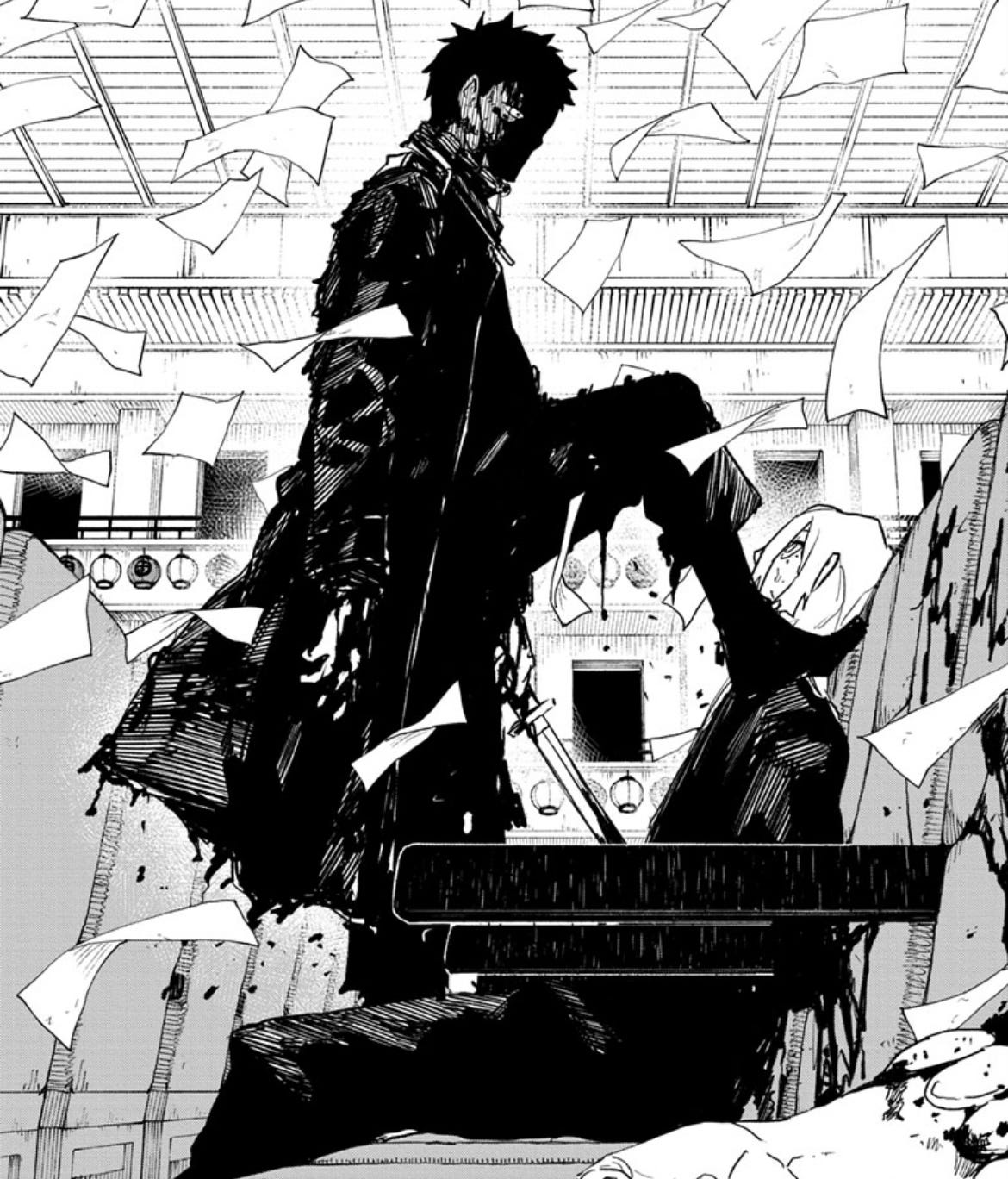Preface!
I’m going to be talking a lot about the TV show Arcane in this post, literally as soon as the preface is over, so I wanted to begin by sharing a personal and semi-embarrassing story about my first encounter with it.
First of all, I was never going to watch it because I knew nothing about League of Legends, but I had a friend (Hi Moe!) who doesn’t like animation say that I had to watch it, which was all it took.
Now to the semi-embarrassing part. When I say this show wrecked me, I mean it wrecked me. I found myself so overcome by emotion that I may have cried three to four times during the first season simply because I found it so beautiful. I’ve never felt creative awe like I feel towards Arcane, seeing this phenomenal story that feels so unattainably brilliant.
Funny enough, my initial response to Kagurabachi was the complete opposite. I was bored. Felt like I’d seen it all before. But everyone seemed enamored with it, and I like katanas well enough, so I kept at it. Little did I know that I’d be putting Arcane and Kagurabachi in the same echelon of storytelling about a year later.
Preface over.
We covered this already but let me say it again—I’m obsessed with the TV show Arcane, on Netflix.
As season two begins, we get two very distinct moments of it just being its own vibe. The first, at a funeral for Caitlyn’s mother, all the background characters are presented in pencil sketches, black and white, nondescript, barely moving. All the sound is muddled, like we’re underwater. But one character is clear—Caitlyn, the focus of the scene. She’s in full color, standing out from everything else, almost framed.
Later on, when we meet Jinx again for the first time this season, the music rolls as she strolls through a spattering of recaps of all the criminal lords dying.
Neither of these choices is necessary to the story, to character, to anything, really. It’s just an artistic choice leaning into the vibe this story wants to create. Either scene could have been straightforward, plot in its simplest form, and nobody would have batted an eye.
When you create a vibe, you give something more than a story. You give an experience. A full-on sensorial immersion. You’re not just watching a series, you’re in the story, and your emotions are in there, with the characters, feeling what they feel. The sights and sounds surround you, they don’t just flash on the TV screen.
You may think I’m being a bit extra, and I wouldn’t blame you. But when you’ve had a story surpass being just a story and advance into an experience like I attempted to describe above, you know the feeling.
Before we get into Kagurabachi, here’s what you need to know: Honestly, not a whole lot given the subject matter, but just so you’re aware—Chihiro is the son of a renowned swordsmith who creates magically imbued katanas. Those katanas have since fallen into a variety of hands, and Chihiro is determined to gather them all so they can’t be used to kill anyone ever again.
And that’s all you need to know.
That same feeling presented itself in Kagurabachi, and what a showing it was. In the span of a single battle, I saw Kagurabachi leaning more into mastering the beauty of moments than ever before. The fight choreography is spectacular yes, but it’s in the pauses, the dramatic showcasing and gorgeous framing, that made me realize that this series is going above and beyond to create exactly what Arcane is creating more and more in season 2—a whole vibe.
Also, if you don’t like the word ‘vibe,’—first off, I don’t blame you—just replace it with ‘atmosphere.’ Same thing. It’s not just a story, it’s an atmosphere, a feeling, an experience.
What’s so interesting about both of the stories I’m talking about here is that in both cases, it took some time for them to lean into that vibe/atmosphere. Sure, both of them were firing from the start of their respective storylines, but the artistic choices they’ve begun taking as they play out are shining beacons of what it means to create an atmosphere that fully engulfs readers/viewers.
The hard thing about atmosphere, is so much of it is instinct; knowing how best to use it, being so engulfed in the story you’re creating that you trust yourself to make bold choices in the name of making the story even better than just the expected elements.
Every story has plot, character, setting, tension, etc. Not every story creates an atmosphere that permeates out of every page and scene. For both Arcane and Kagurabachi, that atmosphere can be summed up in one simple word—cool. They are both so cool and they take time to just be cool.
Not every story’s atmosphere is going to be “cool.” Haunting of Hill House, the TV show (also on Netflix) creates a haunting atmosphere quite well. By establishing how much is going on in Hill House outside of our primary focus, we know that around every corner, in every glance in the mirror, there is the potential of something terrifying. That creates an atmosphere. It’s a willingness to add detail that might be overlooked.
Kagurabachi’s ability to create an atmosphere is steeped in the same—a willingness to add details and flourishes that may very well get overlooked. Rather than just letting the plot and character play out—which they easily could have done, and everything would have been fine—they step back, pause, and invite readers to look around, to bask in the singularity of a panel that is blocked and framed to perfection.
When I gushed about this on Notes, the panel seen below sparked a response from Abdul Muhit (Hi Abdul!) that fed into this thought process. He shared a similar framing/blocking promotional image from the movie The Batman (also seen below), a movie that also does a great job creating—you guessed it—a vibe.
Another difficulty found in creating an atmosphere is being constrained to the tools at your disposal. For instance, in both Arcane and The Batman, a huge piece of the atmosphere comes from sound design. Arcane’s music is brilliant, and they know it, so they let it take center stage from time to time.
The Batman’s sound design is much the same, not just in the music but in the intensity of the sounds themselves, and how those sounds frame the action.
You probably see the problem here—books, manga, etc. don’t have sound. I know, shocking. But that’s why Kagurabachi is such a wonderful example of how you just need to wield what you have, and wield it with confidence. Funny how so much of artistic excellence boils down to having the confidence to do it. Sometimes that’s all you need.
Kagurabachi has always had good fight choreography and storytelling. But it wasn’t until lately that these extra measures really started popping up, and I wouldn’t be surprised if some of that willingness to lean into this more came from the confidence garnered from the series’ popularity. By the same token, I wonder if these gorgeous panels would have hit as hard had they been used in the early goings, before the series had time to find its footing.
Naturally, this leads me to ponder what series I feel like have had a vibe right from the off, and not just ‘had’ a vibe, but thrived with it. Naturally, as with most things, I start with Hell’s Paradise, but Blue Lock is another good example. Both series use creative depictions of mental obstacles to go above and beyond. But does that really count as an “atmosphere” or is it just creative?
It might not feel important to draw a distinction, but I’m going to anyway. There are aspects in both Blue Lock and Hell’s Paradise that I immediately thought of.
Blue Lock: The use of puzzle pieces to show the psyche of a soccer player putting it together on the pitch.
Hell’s Paradise: The spreads where Sagiri is being held down by numerous hands, showcasing how she can’t break free of her own mental blocks.
But here’s the thing—both of those elements are used to advance the story, or to depict what a character is going through. They may feed into the overall atmosphere, but are they exclusively used for that? Not at all. And not just that, but out of context, are those two artistic elements as jaw-dropping as the panels I keep referencing in Kagurabachi? Not really. Certainly unique and eye-catching, but not something I’d frame and put on the wall.
Kagurabachi’s exquisite framing and stupendous artistic choices do not necessarily serve the story directly. It’s exclusively used for creating atmosphere, and that’s why it rises to the top, even above Hell’s Paradise and Blue Lock (egads!). It takes time to be art. It takes time to let its art exist outside of story. To be more than a story. And that is a beautiful thing.
Hey, creatives—it’s okay to take a moment to just vibe. To pause, indulge your narrative voice a bit, or go off the rails just for a good time. In fact, just try that. Rather than advance your story, take a moment and just digress. If you’re an artist too, dedicate a page to just taking a beat to exude the vibe of your story. See what happens. Be careful, you may like it more than you expect.
Hey, fans of Kagurabachi—what has your favorite moment been? There are so many to choose from already, and I’m sure there are many that I might have glossed over.









Bleach also does this very well, especially later on in the series when Kubo's artstyle completes its development. The art, choreography and paneling come together to create a stylized atmosphere that just elevates the story.
I think a strength KB has is that it does feel like a movie (an early color spread was inspired by john wick i believe) building up momentum to the climax and that’s shown in certain shots where the panels are framed kind of like a movie still. Great read!